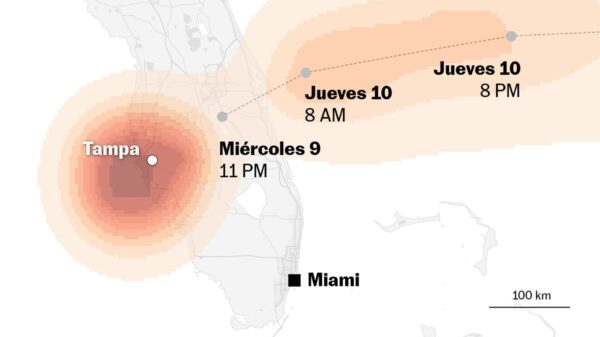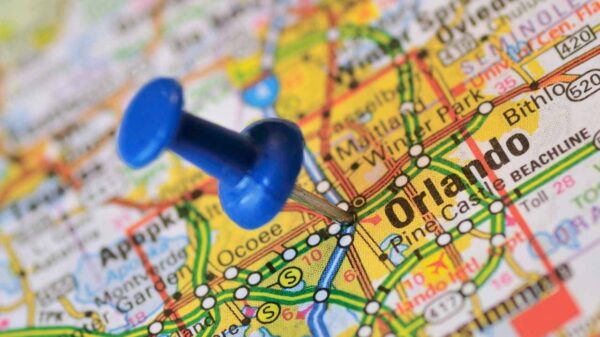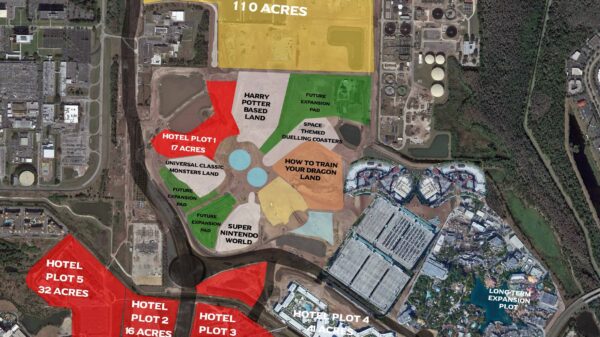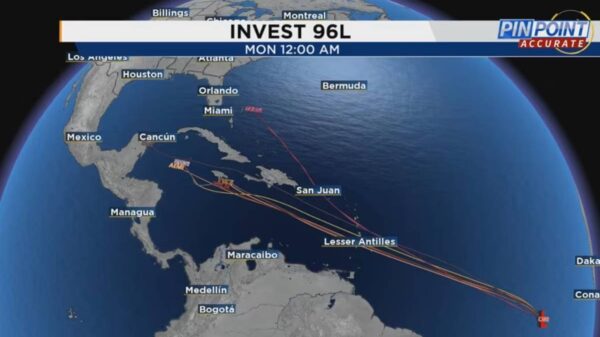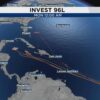"I can say without dramatizing at all: if you decide to stay in one of those evacuation zones, you will die."
Tampa Mayor Jane Castor made this dramatic appeal to residents of the west coast city of Florida, where the dangerous Hurricane Milton is expected to make landfall on Wednesday night or early Thursday morning.
According to forecasts from the U.S. National Hurricane Center (NHC), Milton is projected to come ashore as a "potentially deadly" hurricane due to the storms, strong winds, and flooding it will generate.
In the latest NHC bulletin on Tuesday, the Category 4 hurricane was reported to have sustained winds of 240 km/h and was on a trajectory to make landfall in or around Tampa.
"What we can expect is that the storm will shift a little to the south," Castor said at a press conference on Tuesday. "If a storm surge comes into Tampa Bay, it has nowhere to go. It will reach our neighborhoods," the mayor warned.
Authorities have issued mandatory evacuation orders for flood-risk areas near water bodies in Hillsborough County, where Tampa is located. Evacuations are also in effect for areas at risk in Charlotte, Citrus, Collier, Hernando, Lee, Levy, Manatee, Pasco, Pinellas, Sarasota, St. Johns, and Volusia counties.
President Joe Biden also called on residents in the area: "The time to evacuate is now, now, now… It’s a matter of life and death," the president said, warning that this could be the worst storm the U.S. has seen in 100 years.
Florida and five other states are still recovering from the devastating impact of Hurricane Helene, which struck 10 days ago. The cyclone caused over 200 deaths—the highest number since Katrina in 2005—and left hundreds missing.
In emergency
Since Milton intensified, thousands of residents on Florida’s west coast and other regions in the central part of the state have begun preparing for the arrival of the cyclone.
Supermarkets have been overwhelmed with shoppers buying food and emergency supplies. Gas stations have also started to run out of fuel. By Tuesday afternoon, 1,300 stations were out of gasoline.
Those who have begun evacuating are also facing traffic jams. Some roads have seen a 150% increase in vehicles, leaving many stuck for several hours.
Kathie Allen-Tierney, who was visiting family in Tampa, explained that she had been trying to reach Atlanta for 12 hours. "It’s been horrible," she told the BBC. "We were probably going 10 miles per hour for three hours."
Governor Ron DeSantis urged residents in areas threatened by Milton to take evacuation plans seriously.
"We won’t be able to come back for people who stay here," he said while announcing the establishment of 36 shelters.

Hundreds of flights to or from Florida have already been canceled.
At Tampa Airport, 346 flights were affected on Tuesday, and another 378 were canceled for Wednesday.
The situation is even worse in Orlando, with a total of 781 flights already canceled for Wednesday.
Airlines have announced that there will be no extra charges for changes, and some have scheduled additional flights before the hurricane arrives for passengers looking to leave the state.

When will it make landfall? The forecasts from the National Hurricane Center indicate that Milton will make landfall as an "extremely dangerous hurricane" on Wednesday night.
The most likely area includes the metropolitan Tampa area, home to over three million people.
Meteorologists warn that Milton is capable of generating torrential rains and flash flooding, strong winds, and possible storm surges.
These surges occur when water moves inland from the coast. They are expected to reach between 3 and 4.5 meters.
Given the size of the cyclone, it could be the worst storm to hit the Tampa area in about a century.

Category 4 or 5 hurricanes can knock down trees and power lines, causing residential areas to become isolated and leading to prolonged power outages.
Affected areas could be uninhabitable for weeks or months.
Although the hurricane weakened on Tuesday, authorities warned that it could double in size before making landfall in Florida.
The storm’s core is expected to move through the central-western peninsula and then emerge into the Atlantic Ocean, likely still with hurricane strength.



